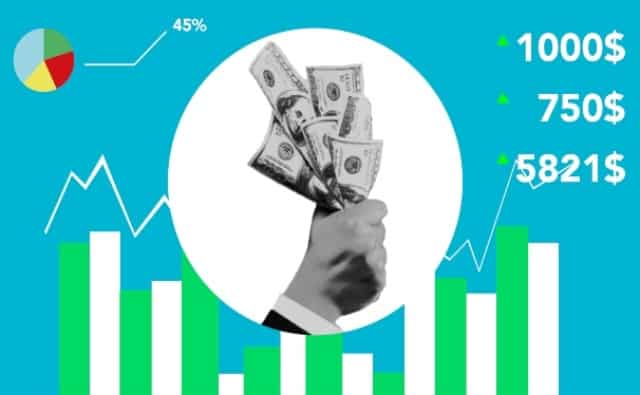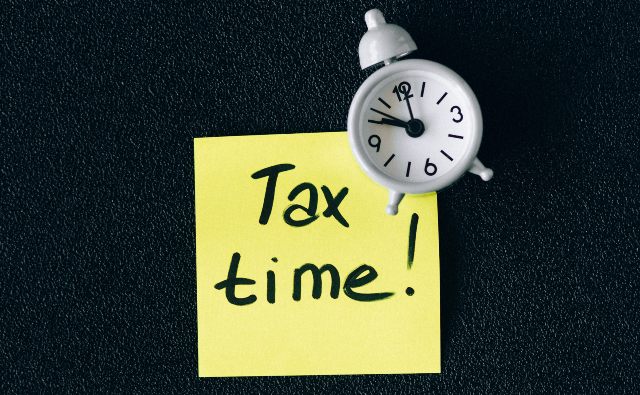Last Updated on July 24, 2022 by The MediFi Guy
For our purposes, broadly speaking there exists two types of investing: active investing and passive investing.
Back in the day prior to the 1970s (and even today but we’ll get back to why I’m singling out the pre-70s era later) when people wanted to invest in a successful business they would enlist the services of an individual known as a “stockbroker”. The stock broker would then do a bunch of research about all the publicly traded companies – which included things like looking through all the businesses’ records, financial statements, performance reports, plans, management structures, etc – and try to determine based on this research which companies were the most likely to succeed. They would then invest in those companies on your behalf and charge you a fee for having done all that research and managing your investment.
This form of investing where individuals attempt to speculate on a few companies and pick stocks to invest in (which in most cases incurs a substantial fee for the investment research and management required) is known as Active Investing aka Stock Picking aka Speculating.
The goal of speculating is essentially to outsmart the general market by choosing a company whose growth will beat* the average market return. For example, the US stock market tends to grow by 8% per annum. One might manage to successfully speculate and invest all their money in a stock pick like Tesla, and end up getting a 200% return in one year, beating the general market by 192%. Decades of data available looking at the outcomes of speculation have shown that only about 10-20% of active investors manage to beat the market consistently over time over prolonged periods of time. The vast majority, 80-90%, end up losing money compared to the market over time.
*Note: here we encounter another principle we need to expand on before moving on. When we say a business “beat the market” or “outperformed the market”, what we mean is that the business’s return was higher than the average market return.
So what is the market return, and how is it measured?
Remember when you were a child and would watch the news, and the broadcast would eventually get to the financial market segment where they would show a whole bunch of random numbers and arrows indicating the change in things they’d call “market indicators” with weird names such as the “FTSE”, “DOW JONES”, “SP500”, “JSE ALSI”. And as a child – not knowing what any of that stuff meant – you would just zone out and wait for the sports section to start?
Well, those things they were talking about that you weren’t paying attention to are called Market Indices (plural) or Market Index (singular).
What is a Market Index?
A market index is an average.
John Doe wants to figure out a way to objectively measure how well the United States economy is doing, as he’s considering investing in the US.
He quickly realizes that since the US has tens of thousands of businesses, there’s no way he would ever be able to review all the information regarding all of those businesses to somehow get an idea of the general economic picture.
So John Doe, seeing that he couldn’t possibly check how every single one of the thousands of businesses is doing, instead decides to select a representative sample of businesses to use as a stand-in for the entire market. He decides to make his sample size 500 businesses.
But how does he choose which businesses to include? After a lot of thought, John realizes that there are some businesses – a modern example would be Tesla – that are so successful that people are willing to pay very large amounts of money to own a single share. He also notices that there are less successful businesses where people are willing to pay less money to buy a share.
So for this particular sample, what John decides to do is to multiply the current share price of the business × the number of shares of the business available.
So for example let’s just say business X has 100 shares issued going at $100 each. That would mean 100 x 100 = 10 000
Business Y on the other hand has 10 shares issued going for $20 each. 10 × 20 = 200
To sound smart, John decides to refer to this number (the one derived from multiplying the price and number of shares) as the market capitalization of the business, aka the market cap. After determining the market caps of thousands of businesses, John decides to list all the businesses in the order of their market caps, highest to lowest.
He then takes the top 500 businesses by market cap to use as his representative sample of the entire market.
So now John has a list of 500 businesses, each with their own market caps, that he wants to use as his sample. But the question remains, how can he use this information to tell him about the general market?
What John does is that he uses some fancy mathematics (which we won’t delve into here) to combine all of the 500 hundred market cap values into a single average number.
By doing so he’s now gone from having 500 data points, to a single number representative of the entire sample.
To sound super smart, he decides to call this single number – that can be thought of as an average – an Index.
And since he used the market caps of the businesses to calculate the index, he decides to further call it a market cap-weighted index.
So we’ve now reached the point where we have a single Index that we can use to represent the market. But in what way exactly does this number tell us about the market?
Well, remember, the number is an average. So let’s say in our above example Business Y were to become even more successful and the share price went up from $20 per share to $100 per share. $100 × 10 shares = 1000. So business Y’s market cap goes up, which would cause the overall average (ie Index) to also slightly go up in response, and vice versa if the share price were to drop.
So fluctuations in the share prices/number of shares of the companies within the index have an effect on whether the index goes up or down.
Another way I like to think of it, is as a league table of 500 teams, with a relegation zone at the bottom. Fluctuations in the market caps of the companies can cause companies to either rise or fall within the league table itself, or if they do very poorly and fall to the bottom, to be relegated out of the league completely and be replaced by a new company whose market cap now qualifies them to be promoted into the top 500 league table.
And since this Index now provides us with a single average number to track, when the market is generally doing very poorly with share prices dropping, the index will drop, and when the market is generally doing very well with share prices rising, the index will rise.
The way the index changes over a particular period of time (per month/annum/whatever time period you choose) is the average growth aka the average return of the market over that time period. The return can be positive or negative depending on whether the index went up or down. By creating this index have managed to create a tool that fulfills the goal of tracking the overall return of the stock market (using a representative sample size).
The example just used to illustrate what an Index is was basically a simplified explanation of one of the most well-known and widely used stock market indices – The S&P 500 Index. An index of the 500 largest companies in the US by market cap weighting.
Market cap isn’t the only way to calculate an index. And there are lots of different sample sizes you can use. This is why you find lots of different types of indices, e.g. the Dow Jones Industrial (an index of industrial businesses), MSCI World Equity (a sample size of 2000 global stocks), JSE Top 40 (40 largest companies in the JSE), etc. But the underlying principle of an index being analogous to an average remains.
That’s all you need to grasp. Index = average.
In summary, the characteristics of active investing are:
-Speculating on stock picks with the hope of outperforming the market (ie the Index)
-High costs due to the active nature of speculation
-High risk of losing your money if you get it wrong
-High reward if you get it right.
Legal Disclaimer: The information on this website including research, opinions or other content is not intended to and does not constitute financial, accounting, tax, legal, investment, consulting or other professional advice or services. The author of this blog does not act or purport to act in any way as a financial advisor or in a fiduciary capacity. Prior to making any decision or taking any action, which might affect your personal finances or business, you should take appropriate advice from a suitably qualified professional or financial adviser.



